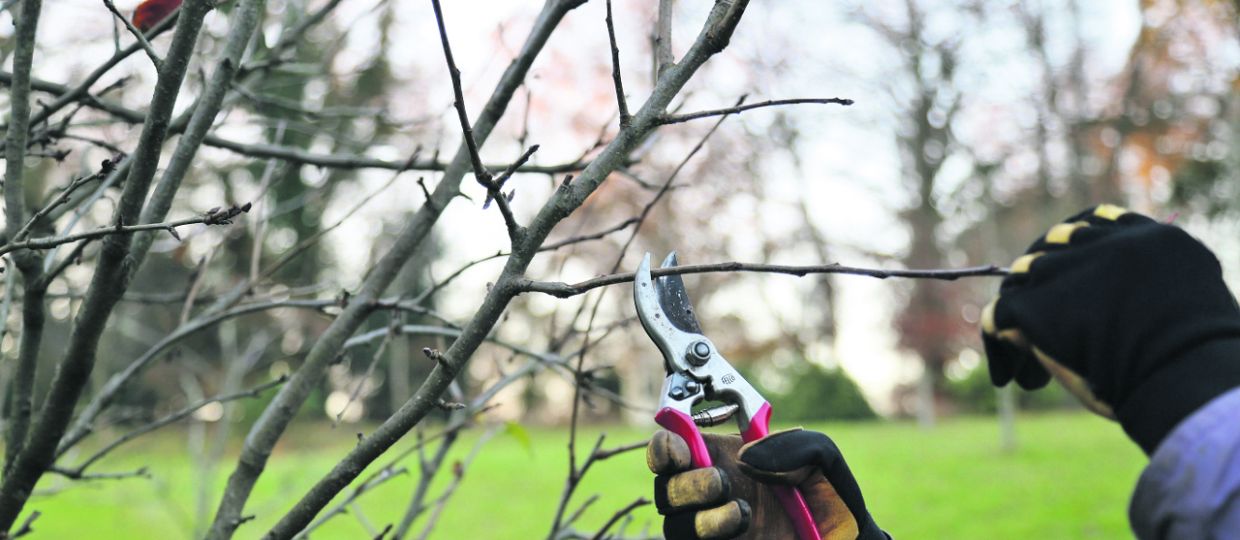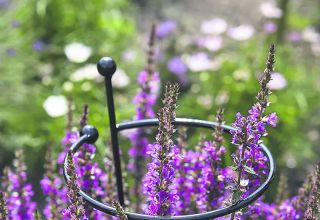Winter can feel like a gloomy time in the garden. The flowers of high summer are a distant memory, the rain is here to stay and the change of the clocks has put paid to any hope of working in the evenings.
However, there is still much to be done.
From looking after your garden tools, to splitting plants and planting bulbs for the seasons ahead, getting outside in your garden in the winter months can be rewarding and give you a chance to breathe fresh air and stay connected to the outdoors.
Just remember to wrap up warm and reward yourself with a hot cuppa afterwards.
1. Protect plants from the cold
Add cloches to winter salads to protect them from the weather and pests and wrap pots of half-hardy plants in bubble wrap or fleece. Bring tender plants indoors or put them in a greenhouse.
2. Cover the ground
If you have an allotment, and you’re not planting a crop to over-winter, cover your empty veg beds with landscaping fabric or cardboard and weigh it down with planks and bricks. This will keep the weeds down over winter, and the soil will warm up quicker in spring. Covering beds also prevents loss of nutrients from the soil due to rain and wind.
3. Winter prune apple trees
Fruit trees are dormant now, so it’s safe to prune them. Remove dead, diseased and damaged wood, and eliminate any instances of branches crossing and rubbing against each other – remove the weaker one. Wear gloves, use sharp, clean tools, and cut at an angle, so that the face of the cut angles downwards, allowing rain to run off it and preventing it rotting.
Generally, its also time to see what needs cutting back in the garden. It also gives you the opportunity of removing the 3Ds – dead, diseased and dying wood. Use sharp secateurs, and long loppers, and reduce the upright stems of apples and pears by one third. This will produces plump fruit buds on nobbly spurs. Pears are more lightly pruned than apples. Aim to create an airy shape, but if you remove an entire branch leave a stump so that it can callous over. You can also reduce the leaders on gooseberries and redcurrants now. Stone fruits are given a lighter pruning in early summer, once the sap’s running, as silver leaf disease can enter cut made in winter.
Roses can also be pruned. Remove the 3Ds and aim for an airy shape. Hybrid teas can be reduced to nine inches (22cm), floribundas to 18 inches (45cm) and English and shrub roses by a third. If there’s lots of woody material at the base, be brave and saw it away with a Felco pruning saw. New stems will appear in spring.
Take long growth off wisterias, cutting the stems back to two or three buds.
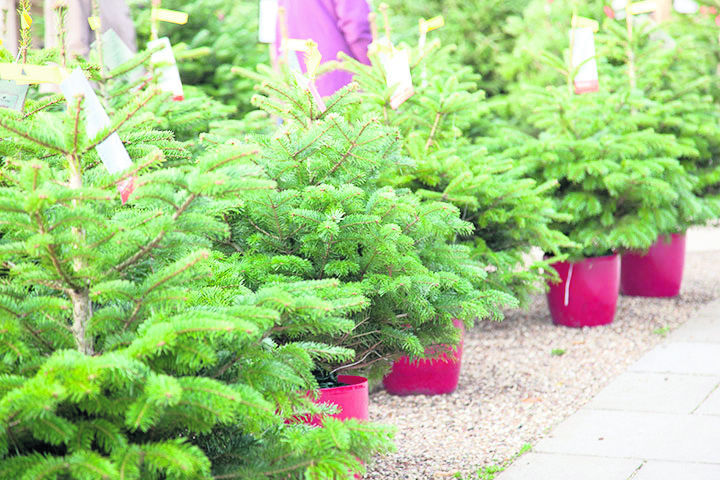
4. Christmas tree options
Many gardeners and home owners will be thinking about Christmas trees, and it’s worth considering a potted pine tree. As consumers have become more conscious of the environment the demand for potted Christmas trees has steadily grown. As well as saving you money (with a little care, a potted tree can be brought back inside next Christmas), it’s the most eco-friendly option as it can be planted in your garden after the festive period, giving you and your family, not to mention the wildlife, great pleasure.
If you do opt for a pre-cut tree, don’t be too quick to bin it after the Christmas celebrations are over, as there’s still so much to gain from it. Shred it for chippings to spread on ericaceous plants, such as blueberries, or use it for garden paths. The branches can also make useful plant supports for peas and broad beans.
5. Mulch as much as you can
Clear weeds, and mulch all growing beds. Not only will this help protect plants from the harsh weather, but it will also provide nutrients and suppress weeds. Bark chippings keep garden beds and borders looking sharp throughout winter or consider using leaf mould or garden compost.
6. Cut plant supports
Coppice some hazel if you have a friendly source nearby. The straight and sturdy stems can be used to make bean supports and wigwams. The frilled fingers or branches are perfect for making flower supports. Stick three to five stems above the plant now, before growth gets going. Place these in a circle facing inwards and weave the pliable ends into each other to create a firm structure for the emerging plant to grow through. It will not only look attractive, providing welcome structure now but will disappear once the foliage grows.
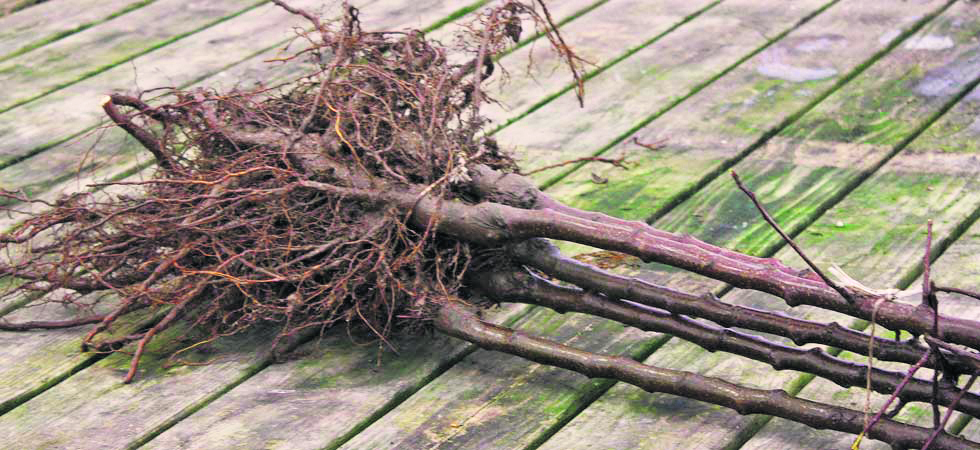
7. Priority is bare root plants
Winter is the time for planting bare-root plants (plants sold without any soil around the roots). It’s an economical way of planting and you’ll find a much wider variety of fruit trees and bushes are available this way. You can also plant bare-root roses, hedges and even perennials.
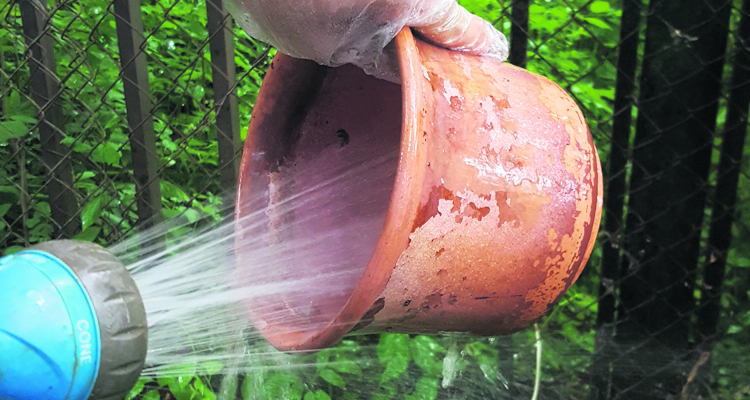
8. Clean your pots and trays
A bucket of soapy water, a duster and a wet cloth is all you need. Dust off the worst of the dirt and then it’s into the warm soapy water. If the weather’s kind, don the winter woollies and get outside and absorb some much-needed Vitamin D. If not, find a spot under cover. Then you’ll be ready for your seed sowing in a few weeks. Larger plastic pots can be placed outside before heavy rain.
9. Order your seeds
Pre-Christmas is the time to order seeds, if you haven’t already. Popular varieties can sell out quickly.
In particular, make sure you order seed potatoes, onions sets and garlic bulbs. Go for reliable, disease free varieties with AGM and F1 status. With potatoes it is well worth picking blight free varieties like Sarpo. Sarpo Miro is an excellent all-rounder, a maincrop potato with nice taste, good texture and exceptional blight resistance. Once your seed potatoes have arrived they can be put in a light, cool, dry spot to chit. Large egg trays are a good way of cupping the potatoes so that they stand with the leaf buds top most without touching one another.
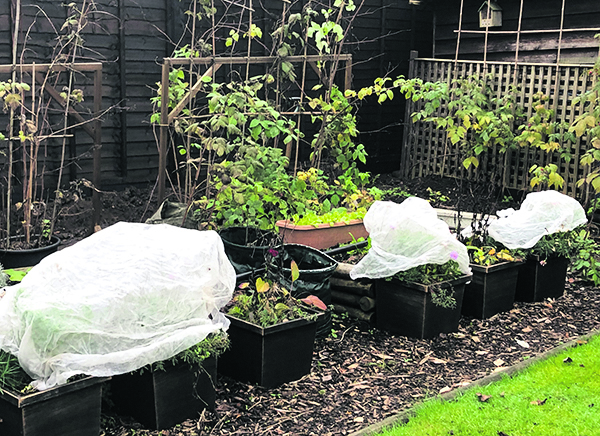
10. Do’s and don’ts in the winter garden
One of the common winter garden mistakes is failing to prepare these areas for the cold season. If autumn weeks slipped by too quickly, be sure to review these winter gardening do’s and don’ts and complete required tasks before the frosts really start to bite.
- Do pick up fallen leaves. Thick mats of leaves will smother the lawn and promote fungal growth.
- Don’t let perennial weeds overwinter in flowerbeds. The roots will become well-established during the winter months, which makes weeding much harder next year.
- Do deadhead flowers with invasive tendencies. Seeds from manageable species can be left in place as winter forage for wild birds.
- Don’t trim shrubs or fertilise during the winter months. These tasks can stimulate premature growth and result in damage to the plant.
- Don’t let your irrigation system freeze. Follow manufacturers’ recommendations for purging and winterising your sprinkler system. Do clean off the vegetable garden and properly dispose of diseased or pest-infected vegetation.
- Don’t leave container plants outdoors without protection. Move the planters close to the foundation of the house, bury them in the ground, or cover with a heat-retentive blanket. Better yet, move containers into a garage or storage area.

